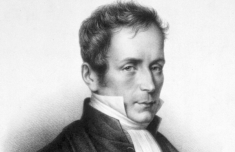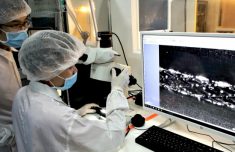Laënnec published the first research on sound in the human body. He is considered the father of clinical diagnosis and wrote the first descriptions of bronchiectasis and cirrhosis. He classified lung conditions such as: pneumonia, bronchiectasis, pleurisy, emphysema, pneumothorax and other lung diseases using his invention.
Dr. Laënnec began introducing many other clinical terms related to the stethoscope, which are still used today.

Rene Theophile Hyacinthe Laënnec (1781-1826) was the first doctor in the world to invent the stethoscope.
Dr. Rene Theophile Hyacinthe Laënnec was born in Quimper in Brittany, France in 1781. His mother died of tuberculosis when he was 5 years old, and Laënnec lived with his uncle, who was then the head of the medical faculty of a university. During his childhood, Laënnec’s health was not good, his body movements were slow, he often had stomach aches and severe coughs. He found solace in music, spending his free time playing the flute and writing poetry.
Laënnec was inspired by his uncle to pursue a career in medicine. In 1795, at the age of 14, Laënnec helped care for the sick and wounded at the Hotel Dieu in Nantes. At the age of 18, he served in the Military Hospital as a third-class surgeon. After that, he became acquainted with clinical work, major surgery and patient treatment.
Within a year, Laënnec had won first prizes in both medicine and surgery at medical school. In 1802, he published his first articles on topics such as: peritonitis, amenorrhea, and liver disease. Gradually becoming more known, Laënnec began to learn about body anatomy and did research on anatomical pathology.
During the last months of his life, he asked his nephew, Mériadec, to stimulate his chest and describe what he heard with a stethoscope. He died of tuberculosis, a disease that Laënnec himself elucidated with his stethoscope.
In his will, Laënnec let his nephew inherit all of his medical research, along with the wooden stethoscope as the most valuable relic.

The wooden stethoscope is used for clinical diagnosis of diseases.
Wooden stethoscopes were used until the second half of the 19th century, after which the stethoscope underwent many improvements and became more and more popular. Nowadays, rubber stethoscopes are commonly used, allowing doctors to listen to sounds in the patient’s body at low and high frequencies.
According to medicine, a stethoscope is a simple combination of one of the most basic laws of physics, sound transmission and amplification. However, it was one of the great impacts and became a symbol of modern medicine.
Originally intended to create distance between doctors and patients, the stethoscope has now become a unique tool for doctors and useful in patient examination and treatment.












